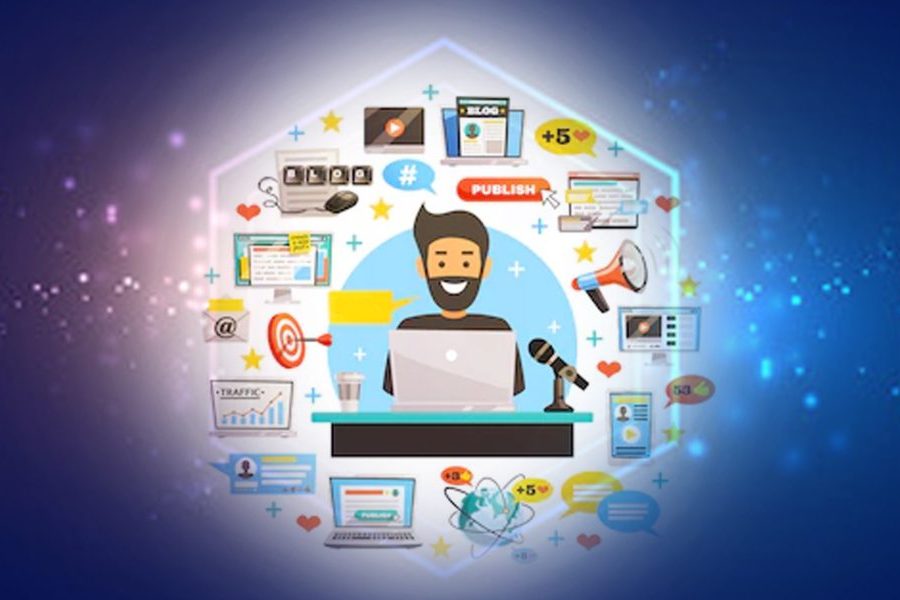News industry has changed considerably within the last ten years, and much of this is due to the breakthroughs in technologies. These include artificial intelligence (AI) which has become a game changer in the workflow of news organizations in creating, distributing and customizing of content. With the fragmentation of audience and the need to offer individualised experiences, news organizations are turning to AI to also offer tailored news that fits the preferences of the content reader, reading habits, and interests. This article examines why the newsrooms say that they are using AI to personalize content, the upsides of such practice, and implications to journalism in the future.
The Rise of Personalization in News
Traditional news delivery often followed a one-size-fits-all model, where editors determined the most important stories for a general audience. However, the explosion of digital platforms and social media has shifted consumer behavior toward selective content consumption. Readers want news that resonates personally, fits their schedules, and reflects their unique perspectives.
AI-driven personalization responds to this shift by analyzing user data and behavior to recommend articles, videos, and multimedia stories tailored to each individual. This shift improves user engagement, satisfaction, and loyalty.
Key AI Technologies Behind Personalization
Several AI technologies enable news personalization:
- Machine Learning (ML): Algorithms learn from user interactions such as clicks, reading time, and shares to predict and suggest relevant content.
- Natural Language Processing (NLP): AI analyzes article content to categorize topics, sentiment, and keywords, improving recommendation accuracy.
- Computer Vision: Enables image and video recognition to tag and recommend visual content.
- Collaborative Filtering: Suggests articles based on similar users’ preferences.
- Predictive Analytics: Forecasts trending topics and user interests to preemptively deliver content.
Together, these technologies power sophisticated personalization engines.
How Personalization Enhances the User Experience
Personalized news content provides several user benefits:
- Relevant Content: Users receive stories aligned with their interests, reducing time spent searching.
- Improved Engagement: Customized feeds increase reading time, shares, and return visits.
- Diverse Formats: Recommendations include articles, podcasts, videos, and infographics suited to user preferences.
- Adaptive Learning: The AI adapts to changing interests over time, keeping the experience fresh.
These improvements create deeper connections between audiences and news brands.
Examples of AI-Driven Personalization in News
Leading news organizations utilize AI personalization in innovative ways:
- The New York Times: Employs ML models to customize homepages and newsletters, optimizing content mix per reader.
- BBC News: Uses AI to recommend stories based on browsing history and regional preferences.
- Reuters: Implements automated content tagging and personalized news alerts for subscribers.
- Flipboard and Google News: Aggregator apps use AI to curate personalized news magazines for users worldwide.
These examples illustrate the growing adoption of AI personalization.
Benefits for News Outlets
AI personalization offers tangible advantages for publishers:
- Increased Audience Retention: Tailored experiences reduce bounce rates and build loyal readership.
- Revenue Growth: Higher engagement drives subscription sales, advertising impressions, and sponsorships.
- Content Optimization: Data insights guide editorial decisions and highlight popular topics.
- Scalability: AI manages vast content libraries efficiently, delivering personalized feeds to millions.
These benefits make AI a strategic asset in a competitive media landscape.
Challenges and Ethical Considerations
Despite its advantages, AI-driven personalization raises important concerns:
- Filter Bubbles: Over-personalization can isolate users within narrow viewpoints, reducing exposure to diverse perspectives.
- Privacy Issues: Collecting and analyzing user data poses risks of misuse or breaches.
- Transparency: Users may be unaware of how algorithms influence their news feed.
- Bias in Algorithms: AI systems can perpetuate existing biases if trained on skewed data.
News organizations must balance personalization with ethical responsibility, promoting media literacy and algorithmic fairness.
Strategies to Mitigate Risks
To address challenges, outlets adopt several approaches:
- Algorithm Transparency: Explaining how content is recommended fosters trust.
- User Control: Allowing users to customize or reset preferences enhances autonomy.
- Diverse Recommendations: Introducing opposing viewpoints and varied topics counters echo chambers.
- Data Protection: Robust cybersecurity measures safeguard personal information.
These strategies improve user experience and uphold journalistic integrity.
The Future of AI in News Personalization
Emerging trends suggest continued evolution:
- Voice-Activated News: AI assistants delivering personalized audio news briefings.
- Augmented Reality (AR): Interactive immersive storytelling tailored to user interests.
- Emotion Recognition: AI adapting content based on readers’ emotional responses.
- Collaborative Human-AI Journalism: Editors working alongside AI for balanced, context-rich personalization.
These innovations promise richer, more engaging news consumption.
Conclusion
AI is fundamentally reshaping how news outlets personalize content, making news more relevant, engaging, and accessible for diverse audiences. While offering significant benefits in user satisfaction and business growth, it also requires careful attention to ethical challenges and transparency. By harnessing AI responsibly, news organizations can enhance democratic discourse and meet the evolving expectations of modern readers.


